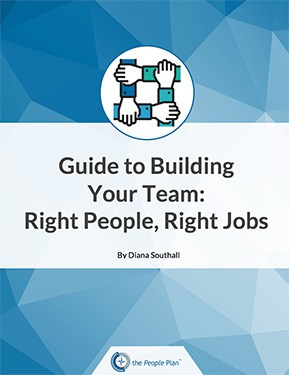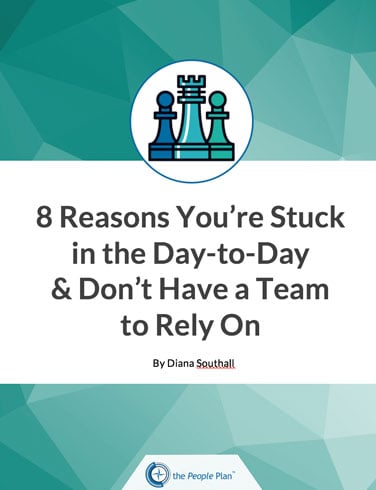
by thepeopleplan | Jun 11, 2012 | Uncategorized
“Every company has a culture, whether they like or not. It’s an undercurrent, sometimes silent, sometimes outspoken.” (Tom Foster management blog)
Culture is the #1 factor that influences employee attitudes, actions and results and cannot easily be overcome by standard “motivational” tools (pay, incentives, performance reviews).
This post is an excerpt from a report of the 2012 Human Resource Roundtable was held at the Harvard Club in New York City.
“How many of you have worked in more than one organization? How many of you have noticed different attitudes, habits and ways of doing things? Did that cause different values and behaviors to show up? Culture is the unwritten ground rules. Everyone in an organization leads culture.” Senn Delaney, consultant.
What is culture?
- Culture is creating a sense of who you are as an organization and representing that culture in everything that is done in the organization.
- Culture is the history of the organization that defines how things get done.
- Culture is the attitudes, belief sets, values, written ground rules, and unwritten ground rules that set the tone of the organization.
Why does culture matter?
- A healthy, high-performance culture impacts financial performance and increases employee engagement (often twice that of low performing cultures).
- Companies with a strong and aligned culture perform better financially, are more resilient and last longer.
- Culture is a top concern for CEOs (fourth on a list of “top risk concerns”) and should be a critical part of a CEO’s strategic focus and business model.
How to change your culture (short list)
- Get consensus on organization direction and goals
- Build and communication the business case for the change and goals
- Communicate the required beliefs, values and activities (Culture) to support the goals
- Recognize and reward those employees that become committed and engaged with the direction (behaviors that support the Culture)
“The leader is a critical part of change; they either enable or create the culture.” — Craig Ivey, president, Consolidated Edison Company of New York Inc.
Read our related Blog post— Are your employees aligned to achieve organization’s goals? Some signs this is lacking….

Image courtesy of stockimages at FreeDigitalPhotos.net

by thepeopleplan | May 17, 2012 | Uncategorized
Compensation (base pay) is the most expensive reward you offer employees yet it is not very impactful in retaining or motivating employees. (It is in attracting new employees and a factor in their decision to take your job offer). Your pay practices can also become a major de-motivator if employees feel that they are not paid fairly compared to other workers.
The problem:
- Surveys find that about half of employees do not know how their compensation is determined.
- Many organizations say that they “pay for performance” yet a top performer might receive a 4% raise instead of a 3% raise—not exactly providing a meaningful difference to reward extra effort.
- Incentive plans often create unintended consequences of discouraging teamwork, encouraging behaviors that do not serve the customer, or become an expected entitlement and not a motivator or perceived reward for great performance.
The solution:
Many theories of motivation and business authors (Dan Pink, Brad Ham) share the philosophy of Total Rewards—provide fair and market competitive wages and then provide the other Rewards to engage your staff. (See our series on 13 Total Rewards in the Rewards category of our blog).
As for incentives (variable pay), these plans need to be carefully designed and communicated so that they align individual effort with business goals and then share a reasonable part of the gain. Give employees an upside when they and the organization does well and you protect your bottom line for the lean times.
Contact us to learn more about the WNY Compensation & Benefits Survey to benchmark your organization to others in the region.
Image courtesy of Stuart Miles at FreeDigitalPhotos.net

by thepeopleplan | Apr 19, 2012 | Uncategorized
Let us take a moment to describe what Human Resources Management really is.
Most people think of the administrative side of “HR,” that department that handles payroll and benefits and record keeping. While important, HR administrative does not make you any money (actually costs you money to maintain) and does not help you improve your business or profits.
The strategic side of Human Resources Management is defining and using processes to make sure you have the Right employees, doing the Right things, and that they do them Right. Then we need to keep these Right People engaged and reward them! This concept is really what Performance Management is all about (so much more than an “annual review”)- managing employee performance for organization goal achievement.
What your managers should be doing:
- Explain performance expectations to each employee (and how they can support organizational goals)
- Get employee commitment to meet expectations
- Measure performance and share with employees
- Give feedback and coach employees to improve performance
- Recognize and reward good performance
- Build a culture and a team that works together to achieve organizational goals
What your organization needs to define and communicate:
- Overall organizational strategy, values, culture
- Specific goals by department and job
- Performance expectations for each job (tied to organizational goals)
- Measurements of performance by individual, team, department, entire organization
- HR systems to assist with recruiting, selection, training, management for employee success
- Total Rewards strategy that attracts, retains and engages top performers
- Manager coaching and resources to do all of the above
The above elements are what all large organizations have – but small organizations can have these as well with the People Plan™ . This is a four-phase process to identify your custom People strategy and then implement People systems to allow your organization achieve its goals. Contact us to receive our free white paper on the 9 steps to build a People Plan.
Image courtesy of basketman at FreeDigitalPhotos.net

by thepeopleplan | Mar 30, 2011 | action plans, culture, performance
When I was in college, I was a member of the novice crew team, in a long skinny boat with 7 other women rowing on the Charles River.
The reason that inspirational posters feature a crew boat is that all the “oarsmen” need to row together at the same time towards the same goal. If you do not row with your teammates you either crash your oars or you can actually be thrown out of the boat!
Of course, this is an ideal analogy for employees in a work team, department and company. Your employees need to know where they are rowing and need to row together.
If you ask your employees, do they know how they can contribute to the monthly goal for the company (you do have them, right)?
How clearly do they know what to focus on every day when they report to work?
The solution is three –fold:
1) clearly outline what the organization wants to achieve,
2) break these down to individual responsibilities (and ideally measurable ones), and
3) communicate individual, team, department goals and results to employees on a regular basis
Hopefully your organization has long term goals (3-5 years from now), but these need to be broken down into annual goals, and quarterly action plans.
Quarterly action plans are essential because they list in detail what steps need to be achieved by whom and by when. Then the person accountable has tasks that drive their daily and weekly performance.
For example, your organization has a goal to get 50 new subscribers to sign up for your email newsletter by May 1. The head of marketing might have tasks that include a postcard mailing to current customers by 4/1 and training customer service representatives to ask every customer to subscribe to receive this newsletter. Customer service reps will be accountable (and measured) to achieve newsletter signups for 10% of their phone contacts per month.
Read more from local coach Rick Wallace (Next Level Coaching newsletter): Does your company execute well?
Employees like to feel that what they do contributes to a “greater” whole.
Spend some time and effort explaining the direction of the boat, how they contribute, and be sure to share successes and misses.
Image courtesy of hinnamsaisuy at FreeDigitalPhotos.net








